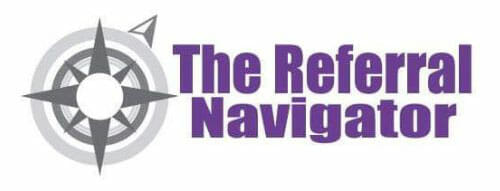Throughout history, people have naturally recommended products and services to friends and family. This organic form of referral marketing has always existed. In the 18th and 19th centuries, businesses started offering incentives for referrals, like discounts or commissions. This marked the beginning of more formal referral programs. Today, referral marketing has come a long way, adapting to changing times and technological advancements. It remains a powerful tool for businesses to acquire new customers, build brand loyalty, and achieve sustainable growth.
How powerful is word-of-mouth marketing for business growth?
Well, let the data speak for themselves. Below are some of the remarkable studies that highlight the effectiveness of referrals for business development.
Nielsen Study (2013)
A Nielsen study revealed that 84% of consumers trust recommendations from friends, family, and colleagues over other forms of advertising. This highlights the power of word-of-mouth marketing, which is often closely tied to referral programs.
The Wharton School Study (2009)
Researchers from the Wharton School of Business found that referred customers have a 16% higher lifetime value than non-referred customers. This study emphasized the long-term financial benefits of customer referrals.
Texas Tech University Study (2014)
According to this study, referred customers are around 18% more loyal than customers acquired through other means. Loyalty is crucial for sustained business growth.
Harvard Business Review (2011)
HBR published an article titled “The One Number You Need to Grow,” which argued that customer referrals are a key driver of sustainable growth. The article emphasizes the Net Promoter Score (NPS) as a metric that correlates with business growth, and a significant portion of NPS comes from customer referrals.
American Marketing Association Study (2017)
A study published in the Journal of Marketing found that referred customers have a 25% higher profit margin than customers acquired through other channels. This emphasizes the financial impact of referrals on a business’s bottom line.
“The Economic Value of Word of Mouth in the Digital Age” – Deloitte, 2016
A leading multinational company, Deloitte, conducted a study that emphasized the significant impact of word-of-mouth recommendations on consumer purchasing decisions. The report highlighted that customers acquired through word of mouth have a 37% higher retention rate.
Now that we know that referral marketing plays a crucial role in business development, let’s dive into uncovering effective referral marketing strategies and how you can better implement them to achieve your firm’s business development goals.
1. Deliver excellent service.
According to a study by Qualtrics XM Institute, customers who rate a company’s service as “good” are 38% more likely to recommend that company. Additionally, according to research conducted by SaaS companies, Salesforce and Zendesk, 78% of consumers will do business with a company again after a mistake if they receive excellent customer service, and nearly three out of five consumers report that good customer service is vital for them to feel loyalty towards a brand, respectively.
That supports how providing exceptional client service is the foundation of referral marketing. A business’s reputation is often shaped by the experiences of its customers and exceptional service creates a positive narrative that customers are eager to share. Thus, when customers receive exceptional treatment, they are not only satisfied but become advocates, willingly recommending the business to their network. Referrals, built on a foundation of excellent service, foster trust, credibility, and a sense of reliability, ultimately contributing to the organic growth and sustainability of a business.
For example, if you are a lawyer, here are some tips for you to deliver excellent service beyond expectations:
Clear Communication
Maintain open and transparent communication with your clients. Explain legal concepts in an easily understandable way and keep clients informed about the progress of their cases.
Prompt Responsiveness
Respond to client inquiries and messages promptly. Timely communication demonstrates your commitment to their case and helps build trust.
Client Education
Educate your clients about the legal process, their rights, and the potential challenges they may face. Informed clients are more likely to be satisfied with your services.
Thorough Legal Research
Stay updated on legal developments relevant to your practice area. Conduct thorough legal research to provide accurate and up-to-date advice to your clients.
Personalized Approach
Tailor your legal strategies to the unique needs and circumstances of each client. A personalized approach shows that you understand their situation and are committed to achieving the best outcome for them.
Empathy and Compassion
Demonstrate empathy and compassion towards your clients. Legal issues can be emotionally charged, and showing understanding can help build a strong attorney-client relationship
Timely Case Management
Efficiently manage cases to avoid unnecessary delays. Timely actions and filings contribute to a positive client experience and can have a significant impact on the outcome of the case.
2. Share a Referral Story of Success.
Sharing referral success stories in your business serves as a potent and strategic approach to cultivating referrals, harnessing the persuasive influence of satisfied customers to attract new clientele, and showcasing the benefit your referral sources receive. Success stories act as real-world testimonials, offering tangible evidence of the positive impact your product or service has had on the lives or businesses of your existing customers. By showcasing these stories, you not only demonstrate the value and efficacy of what you offer but also create a narrative that resonates with prospects.
What is a “Referral Story of Success?” It is a story where there are two characters. The first character is the referral source and the second character is the prospect who becomes a client.
Why is a “Referral Story of Success” different and better than just a client story? A client story only involves one character — the client. It only shows the benefit to the client and the value they got from your service.
Telling a “Referral Story of Success” of how the client was acquired through the referral source shows that two different people value your service. It’s twice as good!
Clients or professionals listening to the “Referral Story of Success” can relate to either the client or the referral source in your story. They can become more motivated or justified in sending you referrals.
First, acknowledge that the referral source faces risk. A bad referral could hurt the referral source’s relationship with the person the referral or the referral recipient. The referral source could lose business, reputation, or referrals for themselves.
In the second part of the “Referral Story of Success,” the referral is facing a challenge that the professional referral recipient helps them address with their service. Showcase a case study of great work done and the solutions and value provided to the client.
Finally, we go back to the original referral source who had faced a risk. We end the story by showing that the referral source did not incur the negative impact but, instead, the referral source got a tangible or intangible benefit.
Show how the referral source benefited in their relationship with the referral. They could gain better friendships, closer business relationships, more referrals for themselves, more introductions and invitations for themselves, gifts, or, in some cases, financial rewards.
Show how the referral source benefited in their relationship with the referral recipient. Not only could the referral have a better relationship with the referral source, but the referral recipient can also provide tangible and intangible benefits to the referral source.
In a “Referral Story of Success,” clients, prospects, and professionals can relate to a referral source or referral in the story. It implies the referral source and the referral both value your service. Listeners can imagine being more justified and motivated to hire and refer you.
Jeff Tockman, The Referral Navigator, can help you write, rehearse, and tell a “Referral Story of Success” where your clients are referral sources and your professional relationships are referral sources. You should have at least 3 ready to tell ASAP!
Now, how can you share your own business success stories to market your service?
First, you have to choose success stories that highlight the impact of your service on your clients. Look for stories with measurable results and positive transformations but before sharing any success story, obtain explicit consent from the client to use their experience for promotional purposes. Respect their privacy and ensure they are comfortable with the level of detail shared.
You can then proceed to develop a compelling narrative that tells the story from the client’s perspective. Include challenges faced, the process of implementing your service, and the positive outcomes achieved. Use visuals such as before-and-after images, charts, or graphs to make the success story more visually appealing. Whenever possible, include measurable results and key performance indicators (KPIs) to showcase the tangible benefits your service provided. Numbers and statistics add credibility and make the success story more convincing.
Utilize various platforms such as your website, blog, social media channels, and newsletters to share these stories. Encourage clients to share the success stories on their own social media or through reviews. Respond to comments and engage with your audience when sharing success stories online.
These stories go beyond mere advertising; they provide a human connection and build trust by illustrating how your business actively contributes to the success and satisfaction of its clients. As a result, referrals naturally follow as satisfied customers become enthusiastic advocates, voluntarily sharing their positive experiences with others. In essence, sharing success stories becomes a dynamic tool for organic marketing, leveraging the authenticity of customer experiences to forge a path of credibility and growth for your business.
3. Identify Potential Referral Sources.
Identify potential referral sources within your existing client base and professional network. This includes current and former clients, colleagues, industry associations, and other complementary service providers. They can even be anyone from your friends or family. Basically, anyone who can vouch for your awesome skills. Keep track of these sources to build a targeted referral network. Look for individuals or organizations that have connections with your target audience. By identifying and cultivating relationships with these potential referral sources, you can create a robust network that consistently brings new clients and opportunities to your practice.
For example, If you work in the legal industry, think of lawyers in complementary practice areas, satisfied clients, or even other professionals like accountants or real estate agents. The possibilities are endless!
Whatever your practice here, to give you a guide, here are some potential referral sources across various industries:
Existing Clients
Satisfied clients are often your best advocates. Encourage them to refer friends, family, or colleagues who may need your services.
Colleagues and Fellow Professionals
Network with other professionals in related fields, such as accountants, financial advisors, or real estate agents. They may encounter clients in need of legal services and refer them to you.
Industry Associations
Join industry-specific associations and attend events to connect with professionals who may refer clients to you. Building relationships within your industry can lead to valuable referrals.
Online Platforms
Create a strong online presence through social media, legal directories, and professional platforms. Positive online reviews and endorsements can attract referrals.
Local Businesses
Establish connections with local businesses, especially those related to your legal practice area. Business owners may encounter legal issues and seek recommendations from their network.
Community Involvement
Participate in community events, sponsor local activities, or engage in charitable work. Building a positive reputation in your community can lead to word-of-mouth referrals.
Former Classmates and Alumni Networks
Leverage connections from your educational background. Alumni networks and former classmates may know individuals or businesses in need of legal services.
Legal Aid Organizations
Collaborate with legal aid organizations and pro bono groups. While they primarily focus on providing free legal assistance, they may come across cases outside their scope and refer them to private practitioners.
Legal Referral Services
Register with legal referral services in your jurisdiction. These services connect clients with attorneys based on their specific legal needs.
Chambers of Commerce
Join local chambers of commerce and attend their events. Networking with businesses in your area can lead to referrals from fellow chamber members.
Professional Development Seminars
Attend and speak at professional development seminars or workshops. Establishing yourself as an expert in your field can lead to referrals from attendees.
Social and Civic Organizations
Join social or civic organizations where you can meet individuals who might need legal assistance or have connections to those who do.
Legal Insurance Providers
Partner with legal insurance providers. These organizations often refer policyholders to attorneys for specific legal matters covered by the insurance.
Marketing and PR Agencies
Collaborate with marketing and public relations agencies. They may have clients in need of legal advice, especially in areas such as intellectual property or contract law.
Online Legal Platforms
Register on online legal platforms where individuals seek legal advice. Some platforms connect clients with attorneys based on their expertise and ratings.
4. Build Strong Relationships.
Once you’ve identified these potential sources, it’s time to build strong relationships with them. Strong relationships foster trust and positive feelings towards a business, increasing customer satisfaction and loyalty, which are key drivers of referrals. This trust fosters a referral-friendly environment where customers feel comfortable recommending the business to others. Strong relationships naturally promote positive word-of-mouth marketing. When customers have positive experiences and feel valued, they are more likely to share their experiences with their network, leading to potential referrals. Moreover, humans have a natural tendency towards reciprocity, meaning we often feel obligated to return favors. By building strong relationships and providing value to your customers, they are more likely to feel compelled to return the favor by referring others to your business.
And no, sending them a fruit basket once a year isn’t going to cut it. You need to nurture these relationships for the long haul. Relationships are the glue that holds referral marketing together so take the time to nurture your existing connections and build new ones.
Building strong relationships with your referral sources is essential for fostering a mutually beneficial network and ensuring a steady stream of referrals. Here are some strategies to strengthen these relationships:
Regular Communication
Stay in regular contact with your referral sources. Update them on your services, recent successes, and any changes in your practice. Regular communication helps to keep you top-of-mind when they encounter potential clients.
Express Gratitude.
Show appreciation for referrals by expressing gratitude. A simple thank-you note, a phone call, or a small token of appreciation can go a long way in acknowledging their contribution to your business.
Understand Their Needs.
Take the time to understand the needs and challenges of your referral sources. Knowing their business or practice areas helps you reciprocate referrals and provide support when needed.
Provide Value in Return.
Make an effort to reciprocate whenever possible. If you have the opportunity to refer clients or provide valuable insights to your referral sources, it strengthens the relationship and creates a sense of mutual support.
Keep Them Informed.
Share updates on the progress of cases that originated from their referrals (while maintaining client confidentiality). Transparency builds trust and reassures your referral sources about the positive impact of their recommendations.
Collaborate on Events or Initiatives.
Collaborate on joint events, workshops, or initiatives that benefit both parties. This could include co-hosting seminars, webinars, or community outreach programs that showcase your combined expertise. Attend networking events together to strengthen your professional relationship. These events provide opportunities to meet new contacts and reinforce the bond between you and your referral sources.
Provide Educational Resources.
Share relevant legal updates, articles, or educational resources with your referral sources. This demonstrates your commitment to staying informed and positions you as a valuable resource in your field.
Personalize Your Interactions.
Personalize your interactions by remembering key details about your referral sources. Whether it’s their interests, milestones, or professional achievements, showing genuine interest reinforces the relationship.
Celebrate Achievements Together.
Celebrate milestones and achievements, whether personal or professional. Acknowledge the successes of your referral sources, and they will likely reciprocate the positive energy.
5. Streamline the Referral Process.
Studies by marketing experts and customer experience researchers consistently report that complex, unclear, or unappealing referral programs are a significant deterrent to customer participation. Customer feedback on review platforms and social media often mentions frustration and confusion with poorly designed referral programs, leading to them abandoning the process. Hence, streamlining the referral process for your business or service is crucial to ensure efficiency, consistency, and a positive experience for both referrers and referred clients. Here are steps to help you streamline the referral process:
Create a Referral Program.
A referral program is a formal way to encourage your customers to refer their friends and family to your business. There are many different ways to create a referral program, so find one that works for your business.
Make it Easy to Refer.
Make it easy for your customers to refer their friends and family. Create a streamlined referral process that is simple and convenient. You can do this by providing them with a referral link or code, personalized referral cards, online referral forms, or by making it easy for them to share your business on social media.
Leverage Social Media.
Utilize social media platforms to connect with potential clients and referral sources. Share valuable content, engage in conversations, and showcase your expertise. Leverage the power of online directories and even your website to encourage potential referrers to connect with you.
Offer Incentives.
Consider offering incentives to clients and referral sources for successful referrals. Incentives can encourage referrals and demonstrate appreciation for their support. This can be in the form of discounts on legal services, gift cards, or even monetary rewards. This can go a long way in motivating your referral sources. It’s a win-win situation: they feel valued, and you get new clients. It’s like a legal version of “You scratch my back, I’ll scratch yours.”
6. Track and Measure Referrals.
Implement a system to track and measure the effectiveness of referral marketing efforts. This can include using customer relationship management (CRM) software or creating a spreadsheet to monitor the number of referrals, sources, conversion rates, and overall return on investment.
Keeping accurate and timely data will help you determine which referral sources are bringing in the most business so you can focus your efforts on nurturing those relationships. Referral marketing is not a set-it-and-forget-it strategy. Keep a close eye on your referral sources and track the success of each referral. This way, you can identify what’s working and make adjustments if needed.
Ultimately, the best CRM software for you will depend on your specific needs and budget. Consider factors such as the size of your sales team, your budget, and the features that are most important to you. However, some of the highly-rated options today include:
Zoho CRM: Best for overall features and value.
Salesforce: Best for reporting and analytics
HubSpot: Best CRM for sales, marketing, and service
Monday.com: Best for project management and sales
Pipedrive: Best for ease of use and a la carte add-ons
Conclusion
And just like that, you’ve cracked the code to implementing strategies for effective referral marketing. It’s not rocket science, but it does require consistent effort. Referral marketing is a powerful tool for law firms to attract high-quality clients, build a strong reputation, and achieve sustainable growth. It is an effective approach to business development because studies have proven that people are more likely to trust recommendations from their friends and family than they are from advertising or other forms of marketing. This means referred prospects are often more motivated to buy than leads generated through other channels. Most importantly, referral marketing can be very cost-effective, as you don’t have to spend money on advertising or other forms of marketing. By following the aforementioned strategies, you can create a referral program that will help you attract new customers and improve your bottom line.






